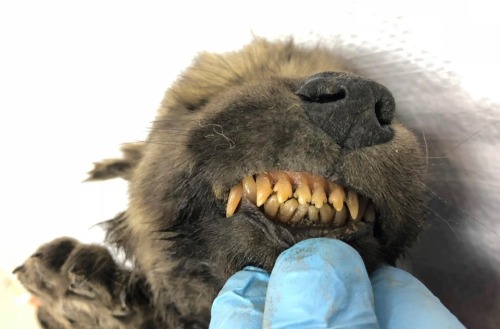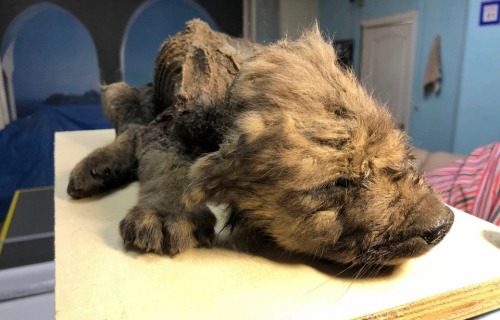Raccoons Like The Pool To Cool Off, But They Also Use It To Wash Their Hands And Food.
Raccoons like the pool to cool off, but they also use it to wash their hands and food.
More Posts from Sawgrassnaturecenter and Others

Who was Marjory Stoneman Douglas?
It is Women’s History Month and we would be remiss if we did not discuss one of the most iconic women in the environmental sciences: Marjory Stoneman Douglas. Marjory’s work in conservation was so impactful she was inducted into several halls of fame, awarded the Presidential Medal of Freedom, and has several institutions now named after her. But just what did Marjory do to earn these honors?
Born in 1890, Marjory Stoneman was a suffragette and an environmental advocate. She became a Miami resident in 1915 when there were under 5,000 people there. From there she would dabble in several different careers in The Miami Herald, the Navy, and as a freelance writer. All of these experiences would cumulate to her writing her book: The Everglades:River of Grass. This book was a pivoting point for the way people viewed the Florida Everglades and its importance. The impact of this book is often compared to Rachel Carson’s Silent Spring.
Her research and writing motivated people like never before to not just see the value in the Everglades, but to protect it from impending real estate development. She is part of the reason the Everglades is now a national park. Her work to protect the Everglades and its conservation continued well into her later years until she died at the age of 108 in 1998.
Two South Florida public schools are named in her honor: Broward County Public Schools’ Marjory Stoneman Douglas High School and Miami-Dade County Public Schools’ Marjory Stoneman Douglas Elementary School.
Ocean Conservation Organizations: Help Save The Oceans & And Its Babies

Oceana:
A non-profit ocean conservation organization that focuses on influencing policy decisions on the national level to preserve and restore our oceans.
Shark Angels:
An organization focused on the conservation of sharks and using technology, education, media and local campaigns to conserve the oceans shark population.
Shark Savers:
Focuses on ending the slaughter of sharks and manta rays. They aim to motivate the end of shark fin soup and the consumption of sharks. They also work to create shark sanctuaries in different locations.

Sea Shepherd Conservation Society:
Sea Shepherd is well known for many things. One being their on going campaign against the dolphin hunts in Taiji and chasing Japanese whalers out of whale sanctuaries. They also have campaigns to vault poaching in Guatemala and advocating a ban on the West Australian shark cull.
Ocean Preservation Society:
They use cinematography to expose crimes against the environment and its creatures.
American Cetacean Society:
Their mission is to protect the habitats of whales, dolphins, and porpoises through public education and outreach programs.

Whale & Dolphin Conservation:
An organization devoted to the well being of both wild and captive cetaceans. They campaign for the end to the trade of captive cetaceans.
Project AWARE Foundation:
A non profit organization that works with scuba divers in 182 countries to implement lasting change in two core areas of shark conservation and marine litter.
Ocean Conservancy:
A non profit environmental advocacy group that helps formulate ocean policy at the federal and state levels based on peer review science.
Coral Reef Alliance:
A non profit organization aiming to save the world coral reefs.

Our oceans and its creatures are in danger and it is up to us to save them both. Let’s work together to save our oceans and it’s precious babies.

The Big Stump Florissant Fossil Beds National Monument in Colorado is centered around an Eocene aged lake in Colorado – making it 34 million years old. Because CO2 contents in the atmosphere were higher in the Eocene, the climate was warmer globally and the plants at this site record the difference.
Keep reading


Art and nature go hand-in-hand more often than people think. Previous artist in residence, Jan Kolenda, came out to touch up our tortoise statue. This statue highlights some important tortoise features such as their leathery skin that is adapted to crawling across land, their dome shaped shells, and the scutes that make up their shell.
Why do snakes yawn? While wildlife biologists do not have a definitive answer, it is like that it is because they are hungry! We can confirm that this video was caught right before feeding time.

Sitting in on a virtual meeting like…
This little fish is called a Garibaldi, found at Channel Islands National Marine Sanctuary! This fish gets its name from the 19th-century Italian leader of the same name whose famous army wore flashy red/orange colors into battle.(Photo: Keith C. Flood. Image description: A bright orange Garibaldi fish head-on and close up to the camera.)







Just your friendly neighborhood shark appreciation post
Keep reading


Dogor is the 18,000 year old pup that was found within the Siberian Permafrost, yet is not quite a dog nor a wolf, but a puzzling connection to both.
Dogor has been miraculously preserved within the permafrost, with its fur, teeth and even whiskers incredibly intact. Radiocarbon dating has placed the animal at 18,000 years old and researchers have suggested that the animal passed away at just 2 months old. The name Dogor means “Friend” in Yakut, a language spoken within Eastern Siberia.
Generally, genetic analysis can quite easily discern whether a discovered canine is a wolf or dog, but in this instance, the genetics suggest that it could be an ancestral link to both. Interestingly, Dogor lived at a time in canine evolutionary history when dogs and wolves began to branch off from each other.The general scientific consensus is that dogs and wolves split from a common ancestor, however, the process of how “dogs became dogs” is certainly contested, and Dogor could be a crucial piece in that puzzle.
If Dogor is determined to be a dog, it will be the oldest ever discovered. The next oldest, the Bonn-Oberkassel puppy, was discovered in Germany and was clearly determined to be a dog of around 14,000 years old, buried with a man and a woman.
The progression of climate change is melting the permafrost more rapidly, and discoveries like these are becoming more and more commonplace.
Images via Sergey Fedorov/The Siberian Times

The Sawgrass Nature Center (SNC) is a nonprofit located in South Florida. Our mission is to educate the public about native wildlife and environmental stewardship. We also rescue, rehabilitate, and release injured, orphaned, or sick wildlife. Animals that cannot be released due to permanent injuries or disabilities are given a forever home on site with animal keepers that know how to properly care for them. We are able to operate due to donations from generous patrons. If you are interested in helping us further our mission, check us out at: https://sawgrassnaturecenter.org/
202 posts
